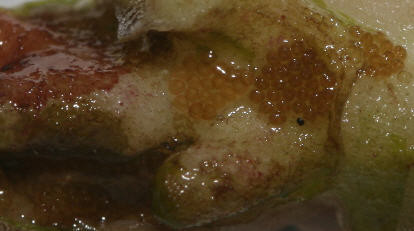Revisited: Proliferation of Pests

Proliferation of Pests in home aquaria
In recent years we have seen a remarkable increase in the popularity of reef keeping. With the advent of new technology and a broader spectrum of knowledge, the successful keeping of live corals in a captive environment has never been easier. The growth in this sector of the hobby, has led to a significant increase in the demand for live corals. With further limitations on the issuance of CITES Permits (the Convention on International Trade in Endangered Species of Wild Fauna and Flora), which most countries require for export of wild-collected hard coral, and reduction in collection quotas, the demand for corals outstrips the allowed supply. This dynamic fueled the growth in alternative sources, namely mariculture / aquaculture efforts, that in most cases also require CITES permits for exportation (though basically unlimited) and hobbyist-level propagation, trading and selling. These practices, while being a great alternative to wild coral harvesting, have however, provided breeding grounds and mechanisms for further distribution for predators such as nudibranchs, flatworms, and crabs in addition to other unwanted hitchhiking pests.
The Two Main Sources:
Coral farms trade many of their popular corals with each other in very much the same fashion as hobbyists. These facilities serve as a breeding ground for many different types of coral predators. Unwanted nudibranchs, crabs, algae, hydroids, flatworms and more undesirables have been found amongst many of the coral farms across the pacific, especially those in Jakarta and Bali, Indonesia. The fact that many of these farms actively trade with each other, simplifies the spread of pests from one locale to another. Naturally, we expect to find predators occasionally on wild collected corals, but with thousands of similar species of coral placed in very close proximity to one another, an ideal location for coral eating pests to proliferate is created with the overwhelming abundance of food. Fortunately, for the coral farms, there are enough indigenous species to control the outbreak of these pests and prevent them from destroying the coral cultures. The problem lies in the removal of these corals from the farms in the ocean and placement of them in captive environments, where no natural predators of the pests exist, where pests will thrive if left untreated. Perhaps of biggest concern, is the fact that these coral farms will most likely always have these pests present. Total eradication would be unlikely without the farms starting fresh from new wild stock in an entirely new location.
The secondary cause of the proliferation of pests is through coral trading/frag swapping and hobbyists selling their coral over the internet. This practice of moving corals from one tank to another has resulted in a dramatic increase in the transference of predators through hobbyist aquaria. In 2004, prior to ORAS Dustin Dortins announcement of a treatment for redbugs, it seemed that almost any tank containing corals of the genus Acropora had these dreaded pests. Today, as redbugs are not as large an issue, focus has been turned to even more harmful pests such as the Montipora eating nudibranch and Acropora eating flatworms. These two coral predators are becoming more prevalent and do not yet have a reef-safe total cure like the one for Red Bugs. With the advanced camouflage and hiding capabilities of both the flatworms and the nudibranchs, it is easy for them to go undetected from one tank to the next.
These circumstances have given rise to the threats that pests pose and have created the necessity to develop or find treatment options to eradicate these nuisance hitchhikers. One argument that has stemmed from the maricultured problems is the debate about who should be responsible for removing the pests. Some believe that the responsibility belongs to the wholesalers, some believe it is the retailers responsibility, some the farms, and some the hobbyists themselves. Rationally speaking, it should be the duty of everyone throughout the chain of custody of the coral to visually inspect and try to remove any predators seen before sending it to another person. While many exporters, importers, and stores visually inspect and treat their corals, it is impossible to guarantee that none of these pests have slipped through. Ultimately, many of these pests manage to make their way through the chain of custody and make their way to consumers tanks, at which point it becomes the duty of the hobbyist to handle the problem.
Recommendations for the handling of maricultured corals by hobbyists:
- Dip the coral in a chemical bath:
- Thoroughly inspect corals and remove any suspect pests or algae:
- Remove the coral from any plug or cultured disc:
If the coral is small, it can be glued using any brand of superglue gel containing Cyanoacrylate. This glue has been used for years by aquarists and is completely safe in the small amounts typically used in gluing corals. The coral can either be glued to a small piece of live rock or directly to the display rock. For adhering larger corals to rock a two-part epoxy such as the HoldFast Epoxy Stick from Aquarium Systems can be used.